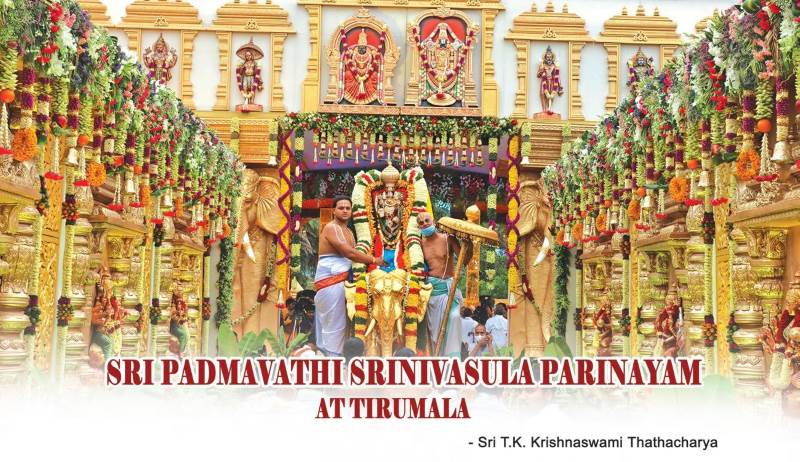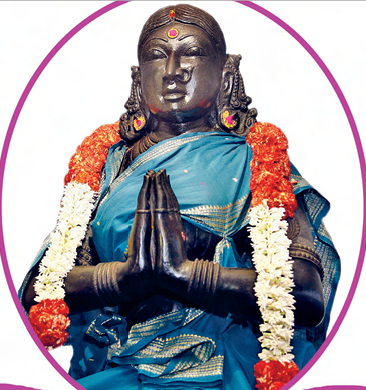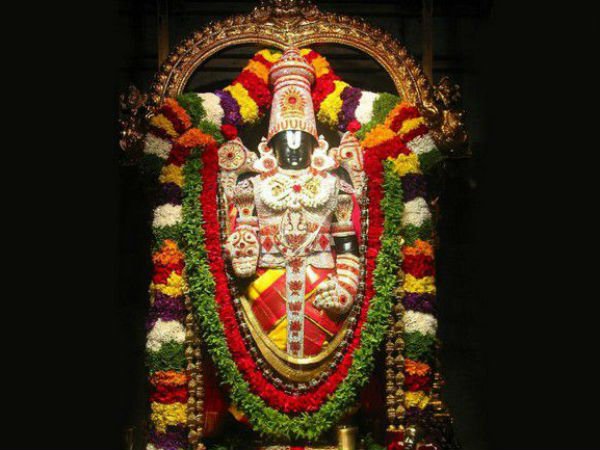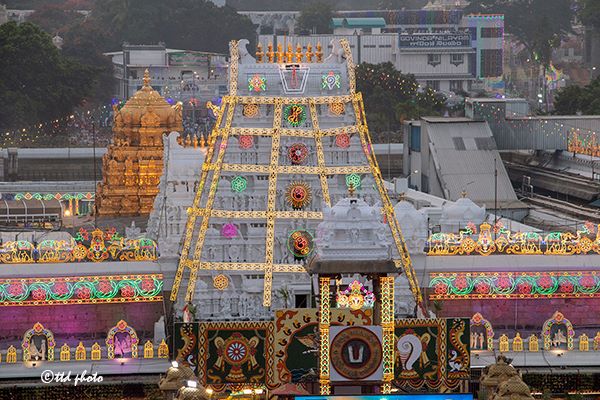Sri Padmavathi Parinayam at Tirumala Celebrating the wedding of the Aadhi Dampathi (Divine couple) Sri Lakshmi and Lord Narayana is a great event celestial since time immemorial. Indeed in every marriage ceremony of humans, the Divine couple are invoked so that the human marriages have the blessings of the Lord and the Goddess. The marriage Read More
Category: Tirumala
The sacred temple of Lord Sri Venkateswara Swamy in Tirumala hills is easily accessible by all modes of transport
Gosamrakshana: The Sacred Practice of Cow Protection
Gosamrakshana: Protecting and Preserving Cows Gosamrakshana’, or the preservation of cows, has always been a significant activity for the Tirumala Tirupati Devasthanams. It has been an ancient practice for the Hindus to donate cows to temples to facilitate ‘Go Puja’ and also to meet the temple’s requirements. Devotees visiting Sri Venkateswara temple also followed the Read More
Tharigonda Vengamamba: The Life and Legacy of a Devotional Poet
Matrusri Tharigonda Vengamamba: Biography, Poetry & Devotion Maha Yogini, Maha Tapswini, Gyana Saraswathi and Telugu Bharathi Matrusri Tharigonda Vengamamba was an ardent devotee of Lord Venkateswara. She was born in Tarigonda village which is four miles away from Vayalpadu of Chittoor District in the Brahmin family of Nadavarika sect with Vashistha Gotra to Sri Kanala Read More
SVBC (Sri Venkateswara Bhakthi Channel)
SVBC – Sri Venkateswara Bhakthi Channel, Tirumala It is an established fact that no other medium enjoys the popularity and impact of television in present circumstances. There are innumerable uses of television. It is also true that TV provides knowledge and understanding to people from little children to centenarians. Some channels are under government control, Read More
Sri Venkateswara Bhakthi Channel (SVBC)
SVBC – Sri Venkateswara Bhakthi Channel, Tirumala It is an established fact that no other medium enjoys the popularity and impact of television in present circumstances. There are innumerable uses of television. It is also true that TV provides knowledge and understanding to people from little children to centenarians. Some channels are under government control, Read More
Celebrations at Tirumala – Ugadi 2025
Tirumala Ugadi 2025 Festival: Special Pujas and Events Sri Maha Vishnu while descending on our planet from Vaikunta brought with him beautiful mountains, valleys and water bodies. In addition, he brought along his chief attendant Sri Garuda and other retinue. He has blessed Telugu land with his choice of place and made Tirumala as Vaikunta Read More
Garland Offerings to Sri Venkateswara: Types & Sacred Importance
150 KILOS FRESH FLOWERS DAILY GETS THE DIVINE OPPORTUNITY Adorning Sri Venkateswara: The Sacred Garlands of Tirumala It is a strong belief of the devotees that just a glimpse of the Universal Supremo, Sri Venkateswara provides them the celestial bliss. Just imagine how blessed these flowers that deck the Almighty every day. Here are some Read More
Matrusri Tarigonda Vengamamba: The Life and Legacy of a Devotional Poet
Matrusri Tarigonda Vengamamba: Biography, Poetry & Devotion Maha Yogini, Maha Tapswini, Gyana Saraswathi and Telugu Bharathi Matrusri Tarigonda Vengamamba was an ardent devotee of Lord Venkateswara. She was born in Tarigonda village which is four miles away from Vayalpadu of Chittoor District in the Brahmin family of Nadavarika sect with Vashistha Gotra to Sri Kanala Read More
Sri Venkateswara Suprabhatam: Full Lyrics, Meaning & Benefits
Sri Venkateswara Suprabhatam: Wake Up to Divine Blessings Sri Venkateswara or Balaji is the Saviour of Kaliyuga. The devotees have immense belief in Lord Venkateswara. God, in return, showers boons on His devotees, as they desire. The devotees Praise the Lord’s excellence, His pranks, and other interesting stories in various ways. This article ‘A Commentary Read More
Ananthalwar (Ananthacharyulu) – Tirumala’s Beloved Gardener
Ananthacharyulu / Ananthalwar – Gardener of Tirumala Bhagawad Ramanuja (1017-1137A.D) the founder of Vishista Advaitha was once giving a discourse on Saranagathi, Prapathi (seeking refuge) to his disciples. He was explaining different ways of worshipping the God. During his discourse, he mentioned the significance of three holy places namely Sri Rangam, Kanchi and Venkatachalam. These Read More






